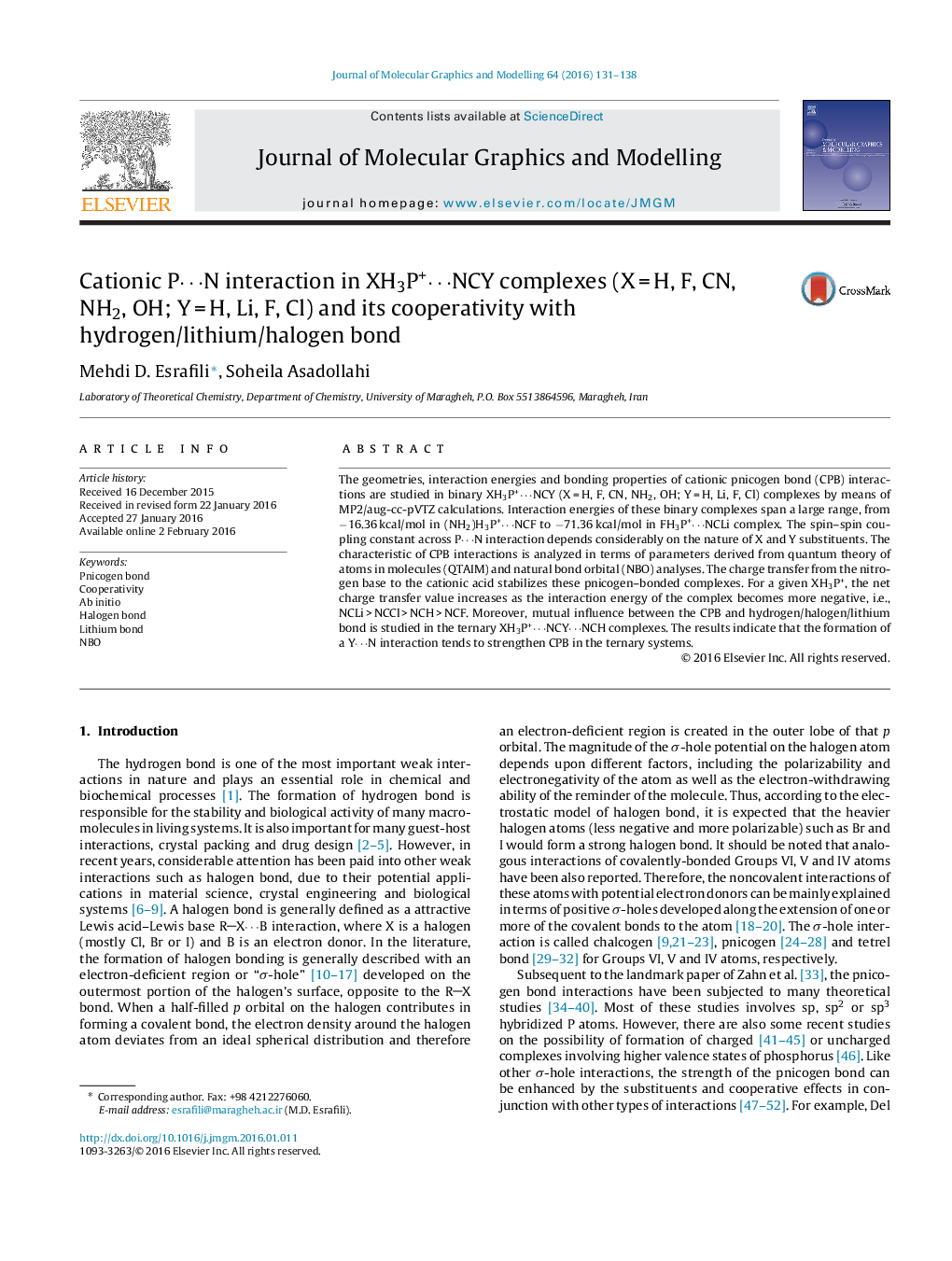| کد مقاله | کد نشریه | سال انتشار | مقاله انگلیسی | نسخه تمام متن |
|---|---|---|---|---|
| 442871 | 692413 | 2016 | 8 صفحه PDF | دانلود رایگان |
• The geometry, interaction energy and bonding properties of cationic P⋯N interactions are studied.
• Interaction energies of these pnicogen bonds range from −16.36 to −71.36 kcal/mol.
• The charge transfer from the nitrogen base to the cationic acid stabilizes these pnicogen–bonded complexes.
• Cooperative effects strengthen the P⋯N interactions in the ternary systems.
The geometries, interaction energies and bonding properties of cationic pnicogen bond (CPB) interactions are studied in binary XH3P+⋯NCY (X = H, F, CN, NH2, OH; Y = H, Li, F, Cl) complexes by means of MP2/aug-cc-pVTZ calculations. Interaction energies of these binary complexes span a large range, from −16.36 kcal/mol in (NH2)H3P+⋯NCF to −71.36 kcal/mol in FH3P+⋯NCLi complex. The spin–spin coupling constant across P⋯N interaction depends considerably on the nature of X and Y substituents. The characteristic of CPB interactions is analyzed in terms of parameters derived from quantum theory of atoms in molecules (QTAIM) and natural bond orbital (NBO) analyses. The charge transfer from the nitrogen base to the cationic acid stabilizes these pnicogen–bonded complexes. For a given XH3P+, the net charge transfer value increases as the interaction energy of the complex becomes more negative, i.e., NCLi > NCCl > NCH > NCF. Moreover, mutual influence between the CPB and hydrogen/halogen/lithium bond is studied in the ternary XH3P+⋯NCY⋯NCH complexes. The results indicate that the formation of a Y⋯N interaction tends to strengthen CPB in the ternary systems.
Figure optionsDownload high-quality image (79 K)Download as PowerPoint slide
Journal: Journal of Molecular Graphics and Modelling - Volume 64, March 2016, Pages 131–138
